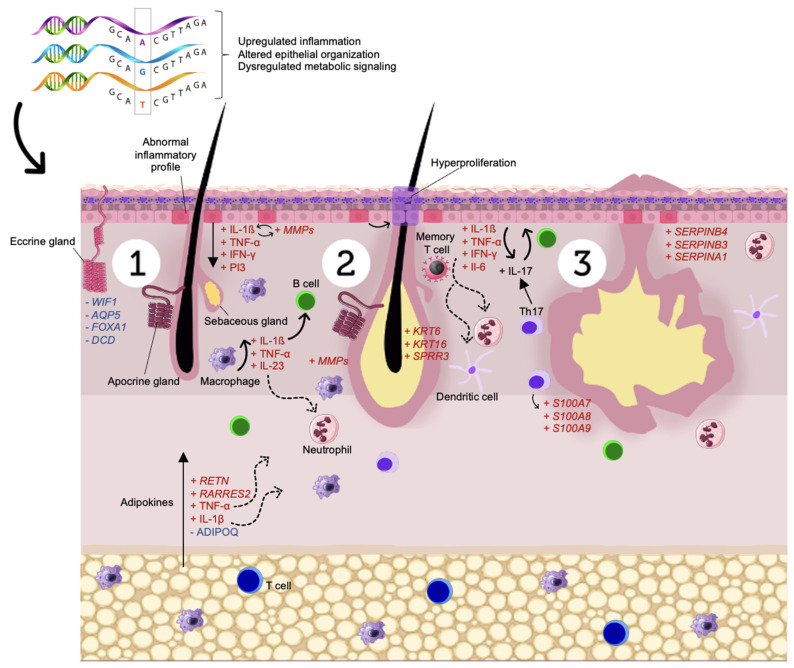Figure 2.
Representation of the HS pathogenesis based on the three main outcomes found by the meta-analysis: upregulated inflammation, altered epithelial organization, and dysregulated metabolic signaling; 1: It is believed that keratinocytes may have an abnormal inflammatory profile in HS lesions. These keratinocytes expressing cytokines such as TNF-α, IL-1β, IFN-γ, alongside pro-inflammatory adipokines, may induce infundibular hyperkeratosis and subsequent perifollicular immune cell infiltration; 2: Hyperkeratosis occludes the hair follicle, resulting in follicular hyperplasia and nodule formation demonstrated by upregulation of KRT6-KRT16 and SPRR3; 3: Non-stop follicular dilatation leads to follicle rupture and impairment of the skin barrier function hinted at due to the upregulation of serpins-family genes, exacerbating inflammation. Recurrent injured nodules may evolve into dermal tunnels with impaired wound healing capacity, a consequence of abnormal eccrine gland function suggested by downregulation of WIF1, AQP5, FOXA1, and DCD.

